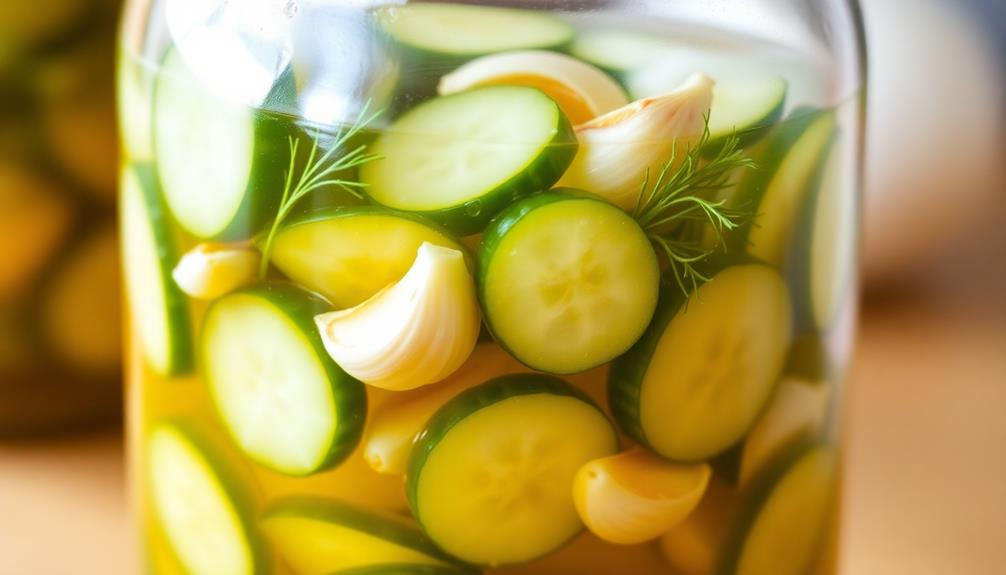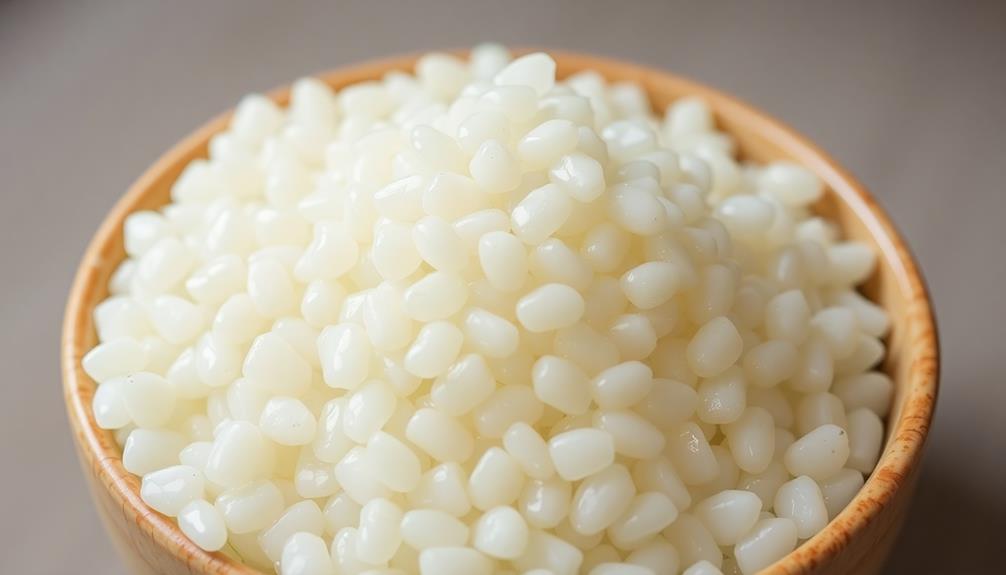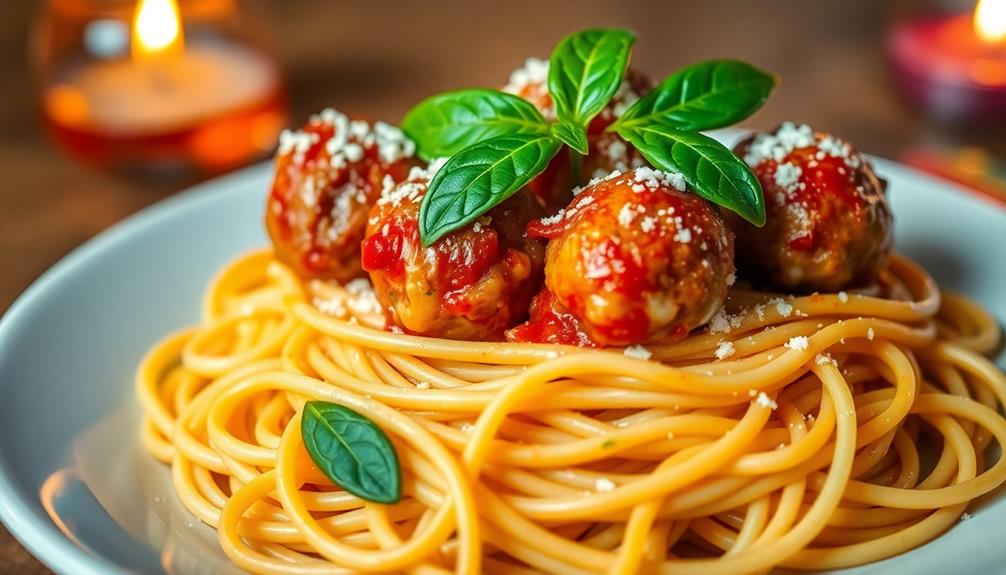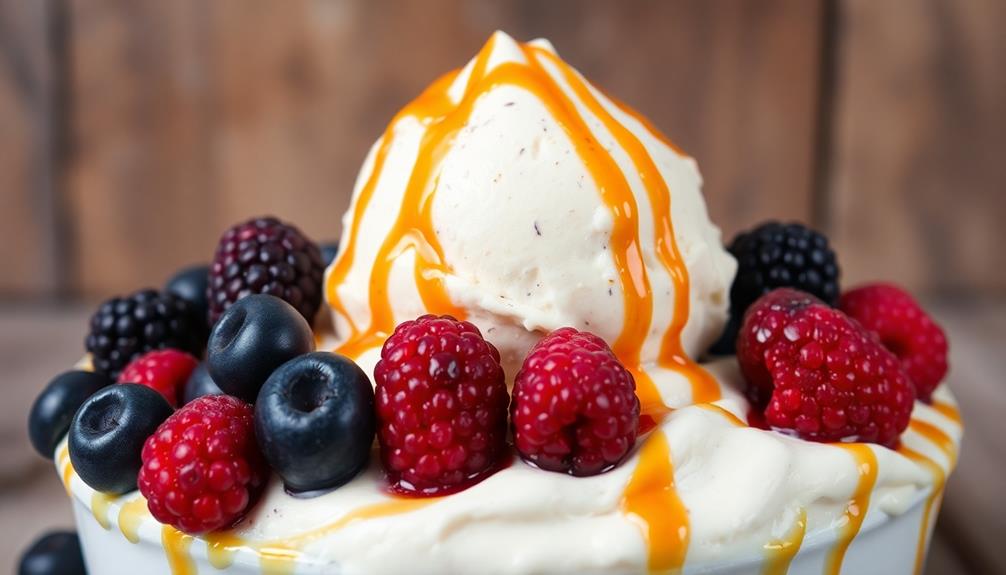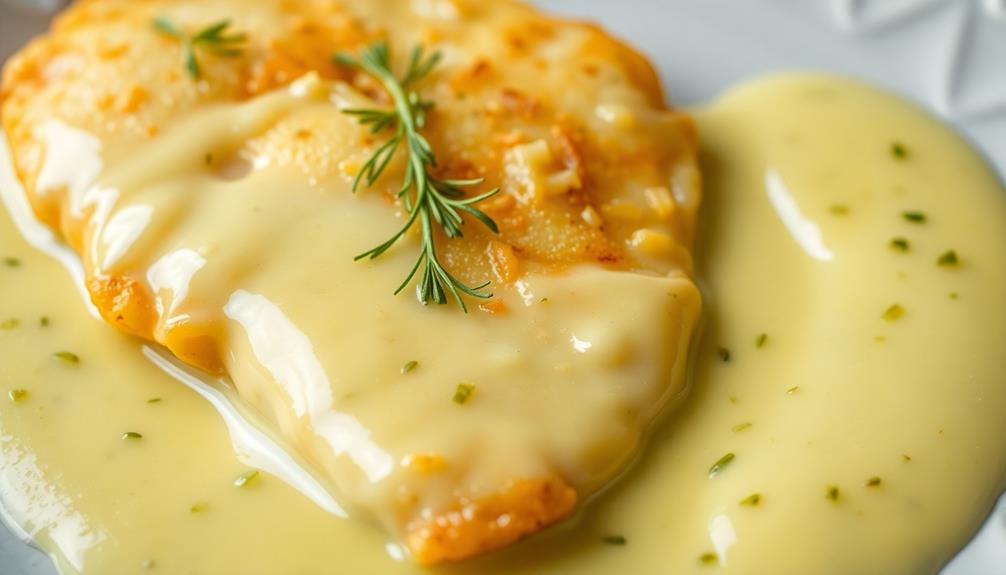Making homemade pickles is a snap – you just need a few simple ingredients and some patience. Start with fresh cucumbers, then create a brine of vinegar, water, salt, and your choice of flavorful spices like garlic, dill, and peppercorns. Pack the cucumbers into jars, pour over the brine, and refrigerate for a day or two. The result? A tangy, crunchy pickle that adds a tasty pop to sandwiches, burgers, and more. From the ancient Mesopotamians to modern chefs, pickles have been a beloved culinary staple for good reason. And the best part? You can easily craft your own signature blend right at home.
Key Takeaways
- Gather essential ingredients like fresh cucumbers, distilled white vinegar, water, and salt for a simple and flavorful homemade pickle recipe.
- Prepare the cucumbers by slicing them thin, rinsing, and patting them dry before packing them into sterilized jars.
- Create the brine by combining vinegar, water, salt, and optional spices, then pour it over the packed cucumber slices.
- Refrigerate the sealed jars for 24-48 hours to allow the flavors to develop and achieve the desired texture.
- Experiment with different vinegar varieties, sweeteners, and spices to create unique flavor profiles for your homemade pickles.
History
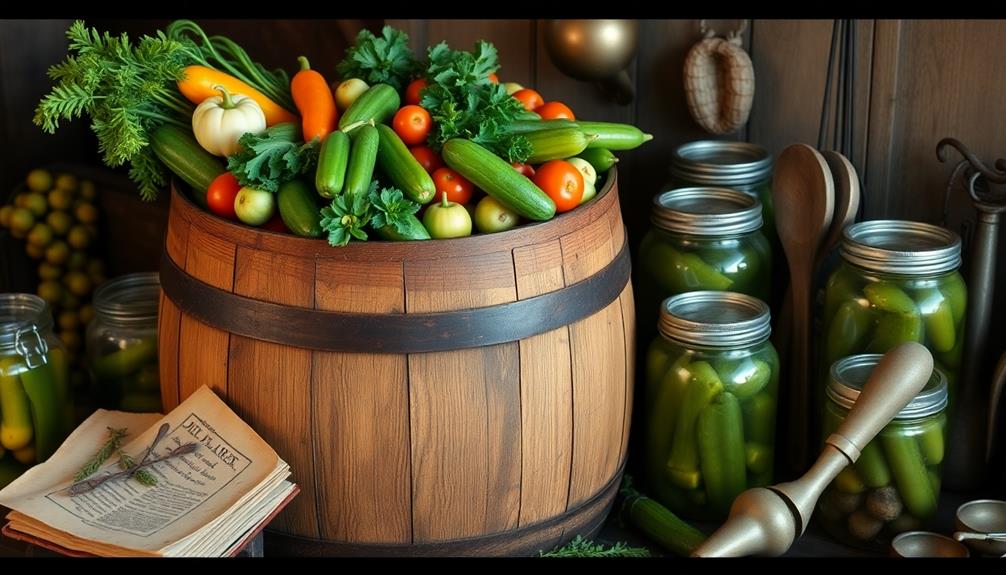
For centuries, pickles have been a beloved food, enjoyed for their tangy flavor and crisp texture. The origins of pickles can be traced back thousands of years, with evidence of pickled vegetables found in ancient civilizations like Mesopotamia, China, and Egypt.
These early pickles were often used as a way to preserve seasonal produce, allowing people to enjoy the bounty of the harvest year-round.
As trade routes expanded and cultures intermingled, the art of pickling spread throughout the world. Different regions developed their own unique recipes, incorporating local ingredients and techniques.
From the dill-infused pickles of Eastern Europe to the spicy, fermented pickles of Asia, the diversity of pickles reflects the rich culinary heritage of various cultures.
Today, pickles remain a staple in many households, offering a delicious and versatile way to add flavor to a variety of dishes.
Whether enjoyed as a snack, a condiment, or an ingredient in recipes, homemade pickles continue to be a beloved and time-honored tradition.
Recipe
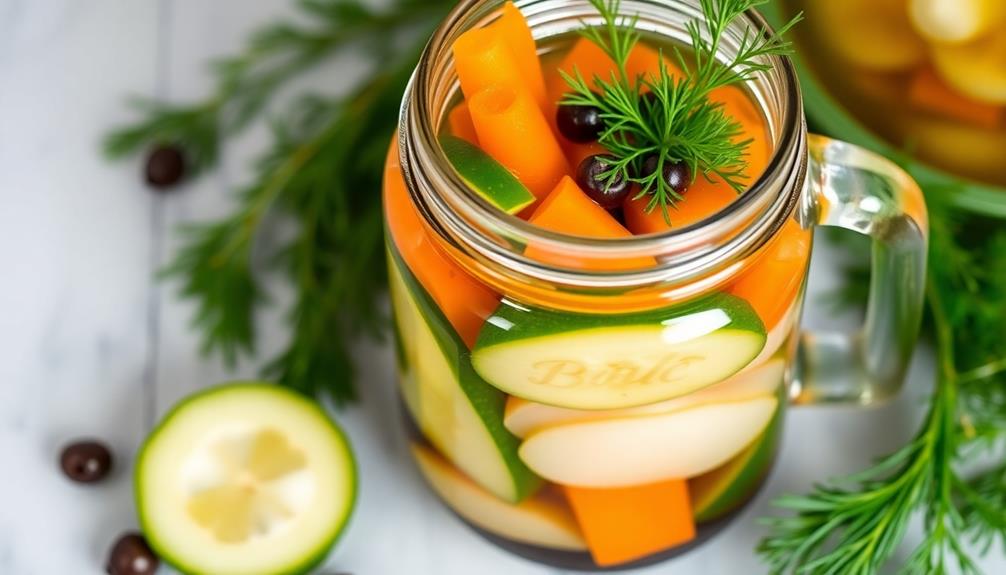
Homemade pickles are a classic way to preserve fresh vegetables and enjoy a tangy, crunchy snack. This recipe offers a simple and flavorful approach to making your own pickles at home. The key is to start with fresh, high-quality ingredients and follow a few essential steps to ensure crisp, well-seasoned results.
The process of making pickles involves submerging fresh vegetables in a brine solution, allowing the flavors to meld and the texture to develop over time. This recipe can be tailored to your personal taste preferences, with the ability to experiment with different herbs, spices, and vegetable combinations.
- Cucumbers (pickling or Persian)
- White vinegar
- Water
- Salt
- Garlic cloves
- Dill sprigs
- Black peppercorns
- Bay leaves
Begin by preparing the brine. In a saucepan, combine the vinegar, water, and salt, stirring until the salt has fully dissolved. Allow the brine to cool to room temperature.
Slice the cucumbers into desired shapes, such as spears or chips, and distribute them evenly in a clean, sterilized jar or container. Add the garlic cloves, dill sprigs, peppercorns, and bay leaves to the jar.
Pour the cooled brine over the vegetables, ensuring they're fully submerged. Seal the jar and refrigerate for a minimum of 24 hours, or up to 2 weeks, allowing the flavors to develop.
When making homemade pickles, it's important to use fresh, crunchy vegetables and to ensure the brine completely covers the ingredients. Experimenting with different herbs and spices can also create unique flavor profiles.
Enjoy your homemade pickles as a tasty snack or use them to add a flavorful crunch to sandwiches, burgers, and more.
Cooking Steps
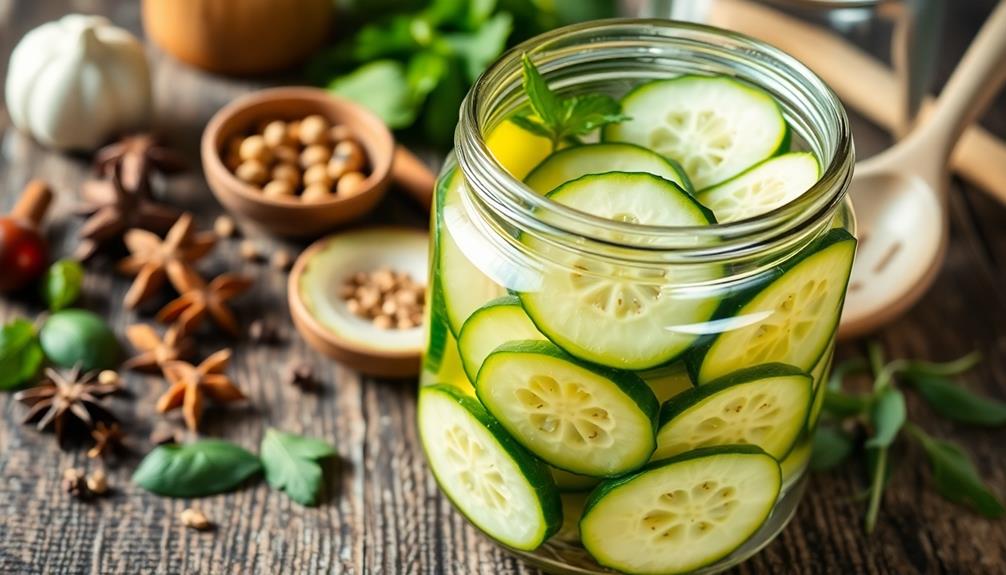
First, prep your cucumber slices by washing and slicing them into thin rounds.
Next, make the vinegar mixture and pour it over the cucumber slices, packing the jars tightly.
Step 1. Prepare the Cucumber Slices
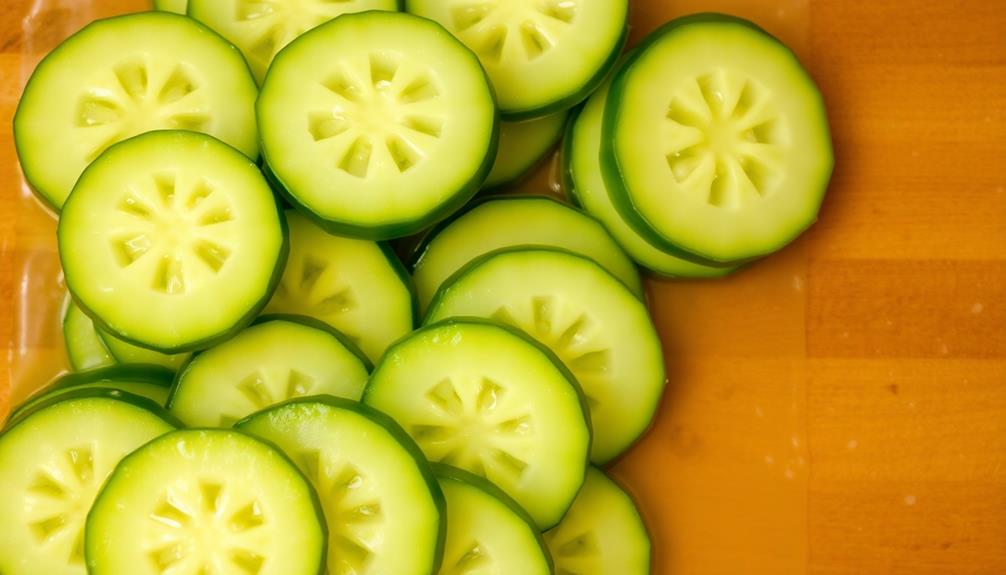
Grab a clean cutting board and a sharp knife to begin preparing the cucumber slices. Slice the cucumbers into thin, even pieces, around 1/4-inch thick. This will ensure they pickle evenly and have a nice crunchy texture.
As you work, try to keep the slices uniform in size – this will help them fit neatly in the jar later on.
Once all the cucumber slices are ready, give them a quick rinse under cool water. This will wash away any dirt or debris.
Gently pat the slices dry with a paper towel or clean kitchen towel. Be careful not to press too hard, as you don't want to bruise the delicate cucumber flesh.
Now they're all set to be packed into the pickling jar! The next step is to prepare the brine that will transform these ordinary cucumbers into tasty, tangy pickles.
Step 2. Add Vinegar Mixture
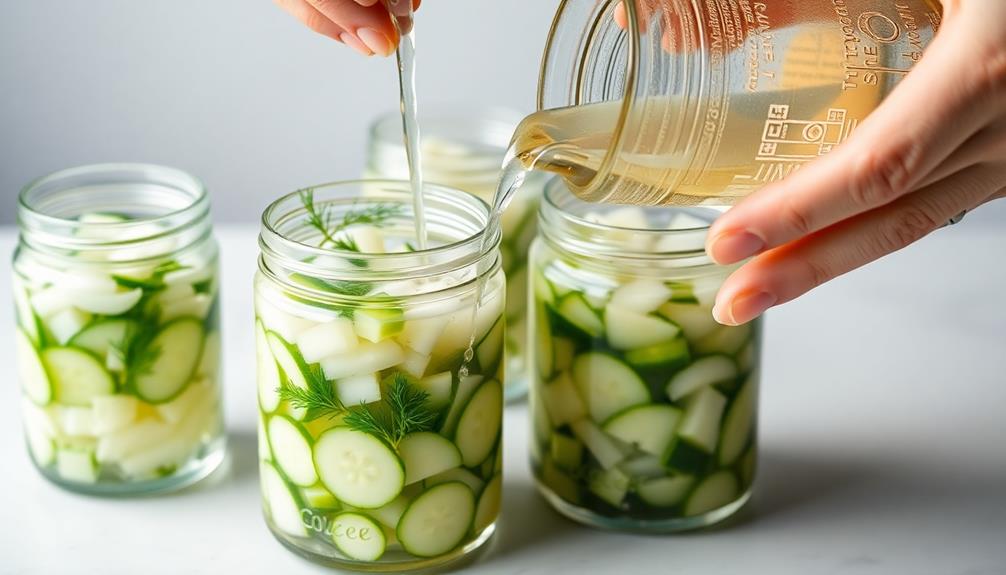
In a separate bowl, combine the vinegar, water, sugar, and salt. Whisk these ingredients together until the sugar and salt have fully dissolved.
This mixture will serve as the brine for your pickles.
Next, carefully pour the vinegar brine over the cucumber slices in the jar. Make sure the cucumbers are completely submerged. If needed, you can use a small spoon or the back of a fork to gently push down the cucumbers to ensure they're covered by the liquid.
Seal the jar tightly with the lid. Give the jar a gentle shake to distribute the brine evenly.
Place the sealed jar in the refrigerator and let the pickles soak for at least 2 hours, though they'll be best after 24 hours. The longer they soak, the more flavorful the pickles will become.
Step 3. Pack Jars Tightly
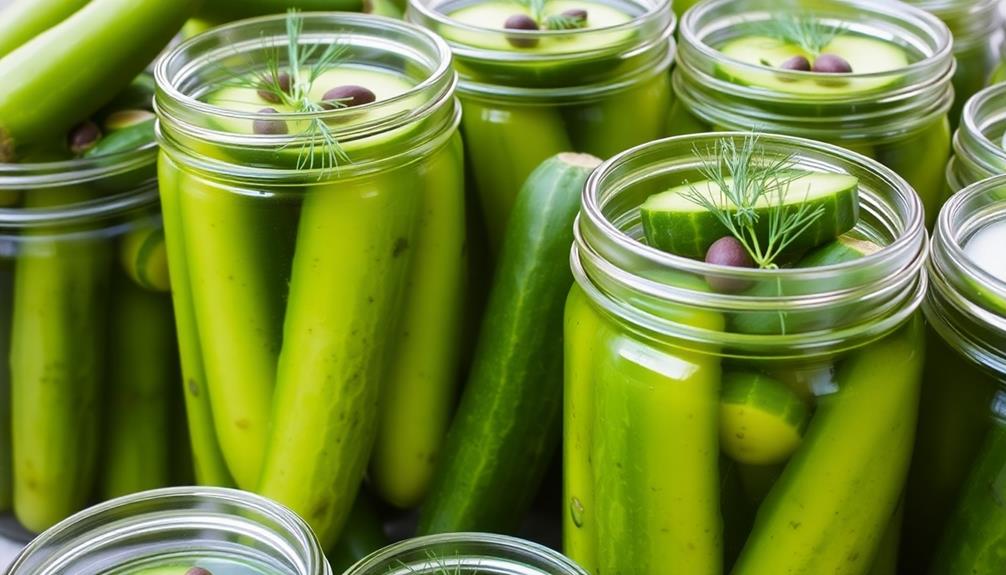
Once the vinegar brine is ready, you'll want to carefully pack the cucumber slices into the jars, making sure to pack them in tightly. This will help the pickles maintain their crunch and ensure even distribution of the flavorful liquid.
Start by placing a few slices at the bottom of the jar, arranging them in a single layer. Gently press down to compact them, then add more slices, packing them in snugly. Continue this process, layer by layer, until the jar is nearly full, leaving about an inch of headspace at the top.
Be sure to pack the cucumbers in as tightly as possible without crushing them. This will prevent air pockets and ensure the vegetables are fully submerged in the brine.
Once the jars are packed, you can pour the reserved vinegar mixture over the top, making sure all the cucumber slices are covered. Seal the jars and let the pickles brine for at least 2 weeks before enjoying their tangy crunch.
Step 4. Refrigerate for Several Hours
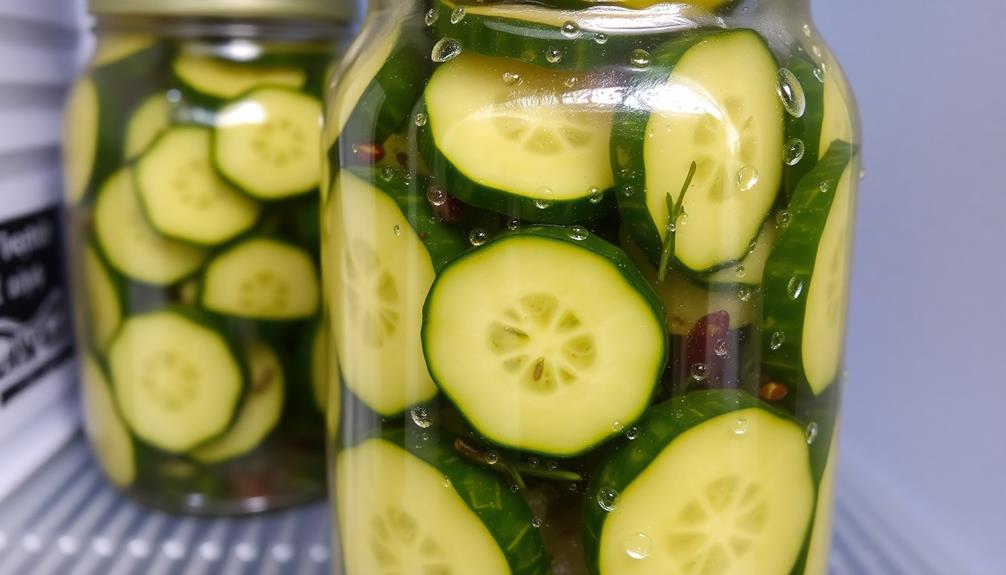
After packing the jars tightly, refrigerate the pickles for several hours. This chilling period is essential for the flavors to meld and the texture to develop. The cool temperature slows down the fermentation process, allowing the pickles to achieve their perfect crunch and tang.
Place the sealed jars in the refrigerator, making sure they're positioned upright to prevent any leakage. Let the pickles chill for at least 4 hours, but preferably overnight. The longer they sit, the more intense the flavor will become.
Don't be tempted to dig in too soon – good things come to those who wait!
Once the recommended time has passed, your homemade pickles are ready to enjoy. Slice them up and serve as a tasty side dish, or incorporate them into sandwiches, salads, and more.
The refreshing, tangy crunch will add a delightful element to all your culinary creations. Savor the fruits of your labor and relish in the satisfaction of making your own delicious pickles from scratch.
Step 5. Enjoy Pickles After Flavoring Develops
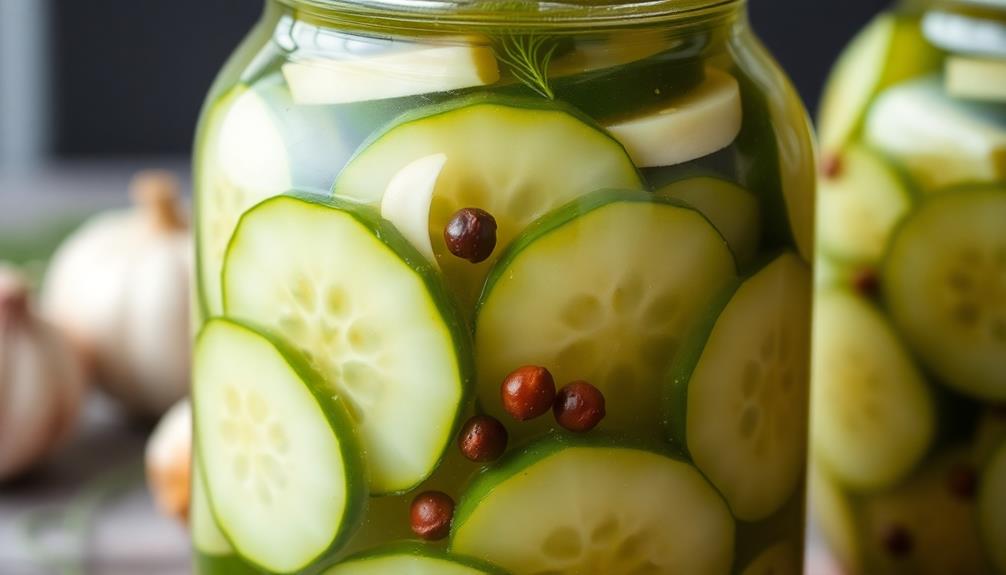
Having refrigerated the pickles for the recommended time, you can now enjoy the fruits of your labor. The flavors have had a chance to meld and develop, creating a delightful, tangy treat. Unscrew the lid and take a peek – the pickles should be crisp, vibrant, and bursting with flavor.
Go ahead and take a bite. The crunchy texture and zesty taste are sure to delight your senses. You'll notice the garlic, dill, and other spices have infused the cucumbers, creating a well-balanced flavor profile.
Feel free to sample a few to see how the pickles have turned out. Once you're satisfied with the flavor, you can begin serving them up.
Pickles make a wonderful side dish, adding a refreshing contrast to rich or heavy meals. They also make a tasty, healthy snack on their own. Enjoy your homemade pickles and savor the satisfaction of creating something so delicious from scratch.
Final Thoughts
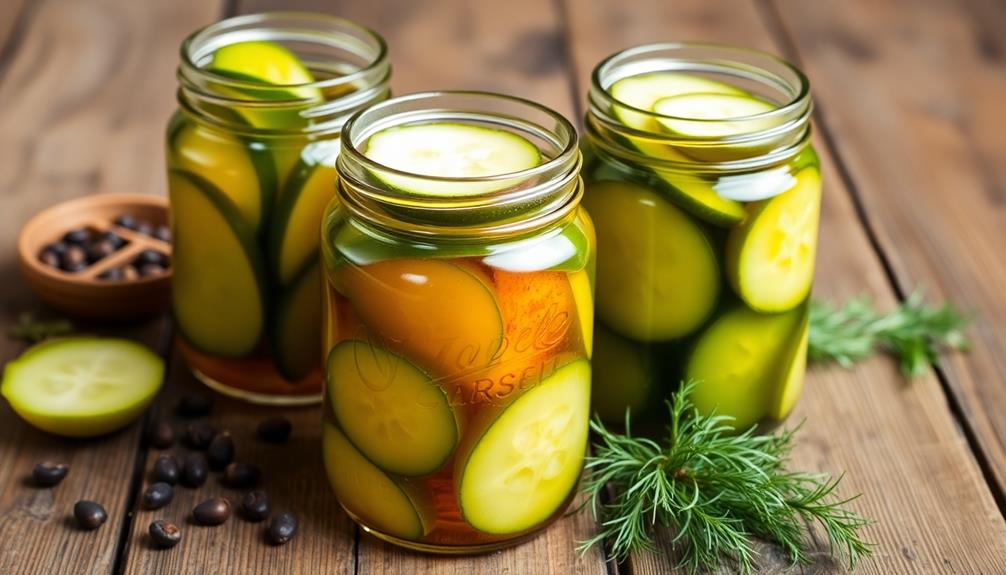
With your homemade pickles now complete, you can confidently enjoy their crisp texture and tangy flavor.
Perfectly preserved, these pickles will delight your taste buds for weeks to come.
Feel free to experiment with different spices and herbs to create unique flavor profiles that suit your preferences.
Whether you prefer them as a snack, a sandwich topping, or an accompaniment to your favorite meals, your homemade pickles are sure to impress.
Frequently Asked Questions
How Long Do Homemade Pickles Last in the Refrigerator?
Your homemade pickles can last up to 3 months in the refrigerator if properly stored. The brine and cool temperature help preserve the pickles, so you can enjoy them for an extended period.
Can I Use Different Types of Cucumbers for Pickles?
You can certainly use different types of cucumbers for pickles. Slicing, pickling, and English cucumbers all work well. Just be mindful of their size and texture when selecting the best option for your homemade pickle recipe.
What Are the Best Spices to Add for Extra Flavor?
You can use various spices to add extra flavor to your homemade pickles. Some popular options include garlic, dill, peppercorns, mustard seeds, and coriander. Experiment with different combinations to find your perfect pickle blend.
Can I Adjust the Level of Sweetness or Acidity?
You can certainly adjust the level of sweetness or acidity in your pickles. Add more sugar for a sweeter brine, or more vinegar for a tangier flavor. Experiment with the proportions to find your perfect pickle taste.
How Do I Prevent My Pickles From Becoming Soft or Mushy?
To prevent your pickles from becoming soft or mushy, you'll want to ensure proper fermentation and storage. Use fresh, crisp cucumbers, the right salt concentration, and refrigerate them promptly after pickling. This will help maintain their signature crunchy texture.

